Big Sewer Country 2020
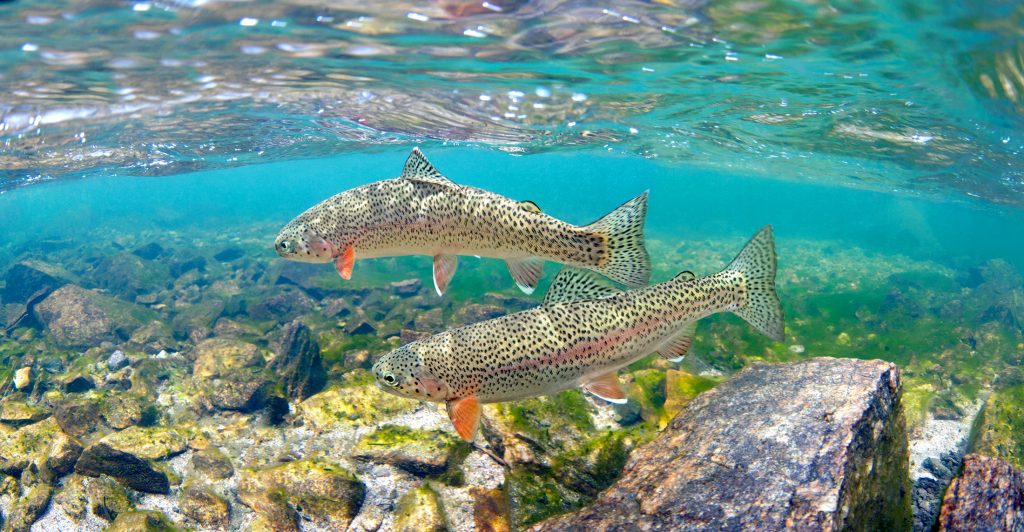
by Greg Lewis
When I first became aware that Big Sky was planning to discharge hundreds-of-millions of gallons of wastewater annually into the Gallatin River, it came at a surprising time – April 2016, only one month after the well-publicized Yellowstone Club’s effluent-reservoir collapsed, sending 30 million gallons into that very body of water.
Explore Big Sky, reported the news of Big Sky’s intent to discharge wastewater into the river and accompanying the article was the proverbial quote from Big Sky’s Sewer District GM, Ron Edwards, stating:
“I’m over storage ponds…I’m over relying on third parties to manage this stuff…We need another piece of this that is 100 percent under our control…and that piece is a pipeline to [the Gallatin] River.
This single pull-quote, written in large bold font, grabbed my attention and invariably launched my year-long quest to uncover, what exactly did Big Sky developers have in store for our state’s most cherished rivers?
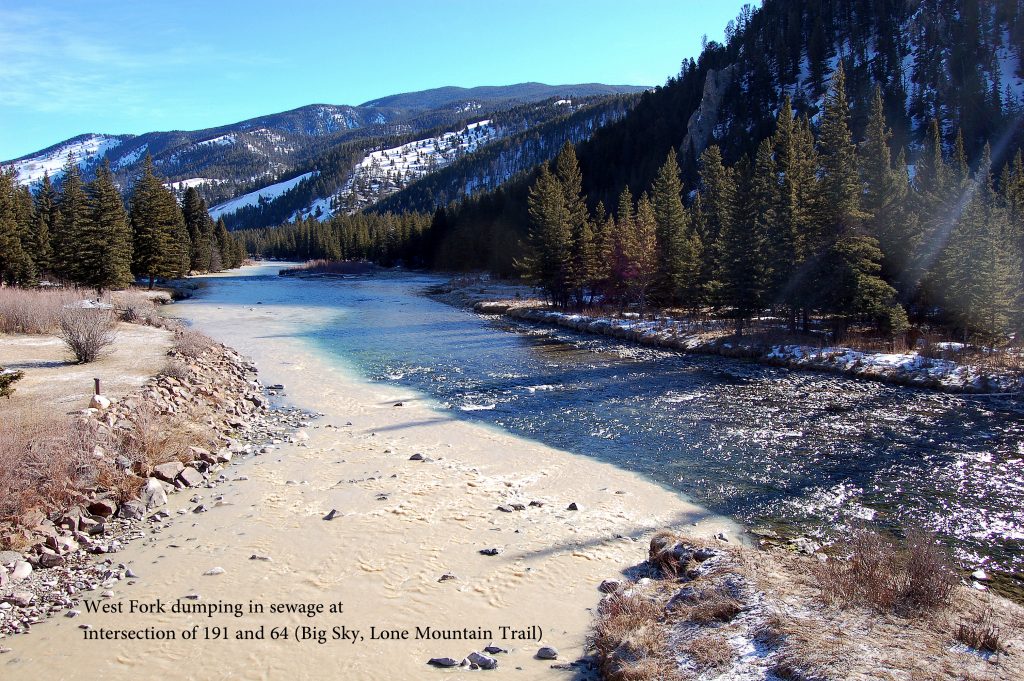
Along with my investigation, I discover much of the motivation behind all of this lies upon the notion that the DEQ will enforce a moratorium on development in Big Sky in the year 2020 if there is no viable wastewater disposal mechanism in place, as it will have reached capacity, as well as little fresh water supply left for build-out.
I realize wastewater discharge is not the most interesting topic to read about in a fly-fishing magazine, but this topic goes far beyond the usual questions of whether or not trout can survive the conditions at hand. This story has to do with greed over common sense, and the very real potential that a handful of developers could ruin the last best place forever.
Far too many anglers assume, “oh, they’ll put a stop to it and block it,” referring to conservation organizations or environmentalists, but this is not the case anymore when it comes to important environmental issues in the Big Sky area.
Some visitors assume the unincorporated resort community of Big Sky already discharges their wastewater into the Gallatin River. Not so, the Gallatin remains one of the few rivers left in America without a significant wastewater discharging-mechanism upstream. Instead, since 1993, an innovative sewer system has protected the water from sewage discharge, using what has become to be known as the closed-loop system.
The innovative sewer system, which entails spraying the ski resort’s treated-wastewater onto the areas 2 main golf courses (in upwards of 1.2 million gallons per-day can be applied during summer) isn’t something the developers came up with on their own. Instead, those developers who intended to further grow the resort community beyond what the vital Yellowstone ecosystem could sustain, were forced to not pollute the Gallatin back in 2000 by the influential conservation-group, at the time known as the Greater Yellowstone Coalition, along with other key conservation organizations. These groups collectively accomplished keeping the Gallatin free and clear by suing the developers and the Big Sky Water Sewer District.
In celebration of this agreement between the conservation organizations and the developers, the GM at Big Sky Resort, Taylor Middleton, made an announcement at a national travel company convention (quoted in a Bozeman Daily Chronicle in 2000). Middleton stated: “Never in the history, past, present, or future, will Big Sky ever discharge treated effluent into the Gallatin River.”
Taylor Middleton is still, 17 years later, Big Sky’s Resort GM. In fact, he was awarded the Chet Huntley Lifetime Achievement Award in 2015 for honesty and being a positive role model. Good old Mr. Huntley made a similar statement, which preceded Mr. Middleton’s, when he first envisioned Big Sky as he promised, “we will never pollute the Gallatin.”
What happened?
“About 10 years ago, developers, the mining industry, and well anyone who wanted to accomplish something negatively impactful on an important resource, that environmental orgs wouldn’t approve, said ‘if we can’t beat them, let’s buy them’”(local angler: K.R.).
My first assumption after reading that Big Sky’s Sewer District GM, Ron Edwards, wanted to build a pipeline and discharge directly into the river was that the Gallatin River Task Force had been recently corrupted by the sewer district’s manager, as by then I’d learned he was on their organizations’ board of directors.
It turns out Mr. Edwards has held a seat on that board for over 10 years. Concerned, I reached out to Kristen Gardner, the director of GRTF (in early April 2016) for clarification on where the organization’s board of directors stood on this key issue.
I wrote to Kristin requesting a formal statement from her as Executive Director, “where do you stand on the recently proposed pipeline discharging millions of gallons of effluent directly into the Gallatin River on an annual basis?” Along with, if Ron Edwards as a longstanding board member of GRTF speaks for the organization’s stance?
Kristin replied to me stating, “Ron Edwards is one member of the Task Force board, which consists of eight members. His opinion on discharge stated in EBS was his opinion and not that of the Task Force board…The Task Force board has not taken an official stance on direct discharge. When and if the board has to take an official stance, they will do so by evaluating if direct discharge falls under our mission, which is, “to partner with our community to inspire stewardship of the Gallatin River watershed” and if it will help us obtain our vision of “a healthy Gallatin watershed for future generations.”
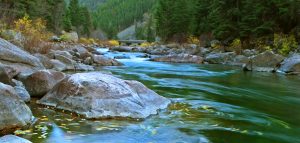
After more investigation, I discovered legal public records of Big Sky Water Sewer District meeting minutes, wherein collaboration with developers and board members are identified and verified. Packy Cronin, President of BSWSD, on June 30, 2015 addresses the issue of discharge with board members, as well as Kristen Gardner and Ron Edwards of Gallatin River Task Force: The following information is verbatim.
………..
COMMUNITY-WIDE WASTEWATER & WATER CAPACITY STUDY Mike Ducuennois (Yellowstone Club) reviewed their engineer’s (WGM Group) findings of the resort area wastewater analysis using a 20-year build out plan. The highlight from the report is the collaboration. Including Moonlight Basin, Ducuennois reviewed the graphs of estimated wastewater generated in 2035, disposal capacity, and shortage. Ducuennois would like to jointly explore options for the community’s targeted wastewater disposal needs. Both Edwards and Ducuennois stated that a discharge permit has to be pursued in addition to other year-round disposal options. President Cronin “wants the District to document its efforts for disposal without discharge and to start now at developing a public relations campaign for discharge.”
A Road Map
In following BSWSD meeting-minutes, over the following months, it was learned direct-discharge was discussed into not only the Gallatin, but also the Madison River, via Jack Creek, between Kristen Gardner, Ron Edwards, Michael Ducuennois, and others. This series of meetings culminated with the beginnings of a stakeholder forum being proposed in November 2015. Initial funding for this forum was provided by none other than Yellowstone Club and Lone Mountain Land Company, the two key-sources of new wastewater introduction due to rapid and out of control development.
Following the interconnecting minutes of these past meetings of BSWSD and GRTF, as well as the Big Sky Area Resort District (BSRAD), provided a virtual road map for a choreographed direct-discharge campaign.
One of the issues so telling is the need for public approval through a PR campaign in an effort to sell the likely unpopular proposal of sending sewage into the historic gem of the Greater Yellowstone Ecosystem. As fisherman flock to the wild and calming waters of the Gallatin River, many would believe this is a centerpiece of environmental protection, but the truth and reality is saddening and disheartening.
One would think an organization with the name Task Force within it would be a protector of the entire river system bearing its name, but with a board consisting of people who fall outside of the spectrum of conservationists, little good is to be expected. Board member Ron Edwards found little need to worry about opposition to proposals from other conservation groups as he conveyed to me in an April 2016 interview that he, “doesn’t see GYC or TU as litigious as once were back in the day,” and doesn’t anticipate strong backlash. He continued to tout that perhaps, “one environmental group might take run at them,” but suggested they would win the discharge permit from DEQ.
Greater Yellowstone Club?
But, GRTF is not the only nonprofit undermining and disserving our beloved river. I reached out to other groups only to receive discouraging responses.
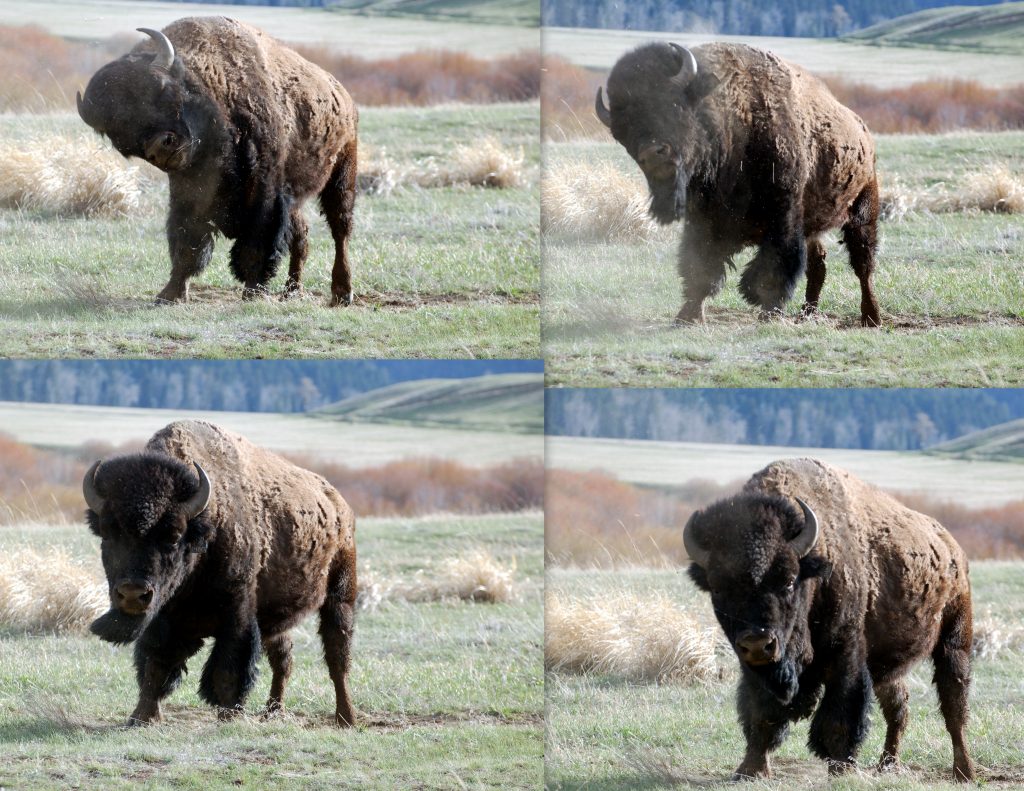
When I asked Bob Zimmer, of the Greater Yellowstone Coalition, “what if I wanted to stop direct-discharge?”
He replied, “You’ll need $200,000 and 35,000 signatures, based on my experiences with Wild and Scenic.”
I was visibly discouraged by this answer and he seemed rather pleased with this reaction. There I was, reaching out to a key member of one of the largest conservation organizations in the country to share what I’d gleaned so far: that Big Sky was pursuing direct-discharge, and he spends the better part of the conversation attempting to shake me off the story, to dissuade me from pursuing it further, and then shoots me down with figures in both funds and signatures he assumed I’d have a difficult time acquiring. This meeting too occurred in early April 2016.
Mr. Zimmer’s attempts were especially troubling given I’d by then logged-in to GYC’s website and learned the organization he works for operates on an annual budget in the range of $3 Million and has 40,000 members.
…………
During the months of August through September, the Big Sky Sustainable Water Solutions Forum commenced (aka: the PR campaign for discharge) and though I followed the proceedings and notified anyone that would listen what exactly was going on, I was forced to turn my attentention away for a few months due to the Yellowstone River fish-kill.
Montana TU
By October 2016 I’d heard and seen enough, and at the recommendation of people equally concerned, I reached-out via email to the other main conservation group involved, Bruce Farling of Montana Trout Unlimited, to share what I had uncovered and offer to further communicate with him as I learned more.
I conveyed to Mr. Farling the overall troubling sense I was feeling that the developers and those in charge with running this unincorporated ski resort area, along with the two most powerful conservation groups, Trout Unlimited and Greater Yellowstone Coalition, might not be opposing direct-discharge into our rivers this time around.
Mr. Farling, of Montana TU responded, “we, or at least Montana TU, has not talked to Ron Edwards nor anyone else associated with Big Sky, the Yellowstone Club, or Moonlight. So, anyone associated with the development community who says they know what we’re thinking is not getting their information directly from the source.”
Mr. Farling continued, “Frankly, direct discharge of treated wastewater might be unavoidable. The problem is that the Big Sky area has mushroomed, and it is continuing to grow rapidly. The wastewater has to go somewhere.”
“As long as members of the community, as well as the many outfitters and guides and other folks ignore pressing local government to institute an effective, regulated growth policy that recognizes limits, the developers will continue what they’re doing — which is to expand the development footprint around Big Sky and stress the river and its tributaries…As long as promoters of tourism, skiing and fly fishing — including the outfitting industry and angling publications that make money from the waters around Big Sky — continue to advertise the Gallatin and Madison as great destinations, people will want to come there, and want to have their piece, which often means more McMansions more condos and more demand on water sources.”
TU National
While Mr. Farling correctly suggested it was up to the general public and those in the many associated businesses to act, and that Montana TU has not been intimately involved, Trout Unlimited National on the other hand, under the representation of Pat Byorth, has in fact been to Big Sky and has spoken at length with Ron Edwards, as well as the key developers at YC and Moonlight, on multiple occasions over the previous three months.
Mr. Byorth has been floating the idea of rewarding the very Big Sky developers who have been causing the pollution and diminished inflow rates for years, with what are called mitigation credits, from what is known as a Mitigation Bank.
This is an appealing program when it relates to discussing water rights with ranchers – those diverting a vital tributary’s inflow – but to suggest swapping fresh water inflow to accommodate future development with treated-wastewater seems ludicrous.
It has been further suggested in meetings, that in order for this mitigation credit swap to occur, the existing wastewater storage-ponds at BSWSD treatment facility could be used. Michael Ducuennois, VP of Yellowstone Club Development, suggested just that in a stakeholder-meeting on the topic of mitigation credits on Nov. 3, 2016: “These empty ponds with fresh, or a mix of reclaimed water, could be used…then you could have your August and September types of releases there, which would be helpful.”
That scenario of course, could only be accomplished if a pipeline directly leading from the treatment ponds to the Gallatin River were built, satisfying the precise wishes of Ron Edwards and the developers he works for (ex: Mr. Ducuennois) who sit on BSWSD’s board of directors.
Here we have Big Sky and Yellowstone Club developers who have been diverting the surface water and draining the groundwater for the second-home market usage for years, replacing miles of native grasses with pavement, as well having a recent history of fouling the very stream – the West Fork – with 30-million-gallons of effluent.
So, for Mr. Byorth representing Trout Unlimited National to initiate a recorded conversation and propose awarding them with some type of mitigation credit is confusing, and warrants further clarification from those involved. And preferably sooner and before DEQ permits are filed, rather than later; when it’s too late.
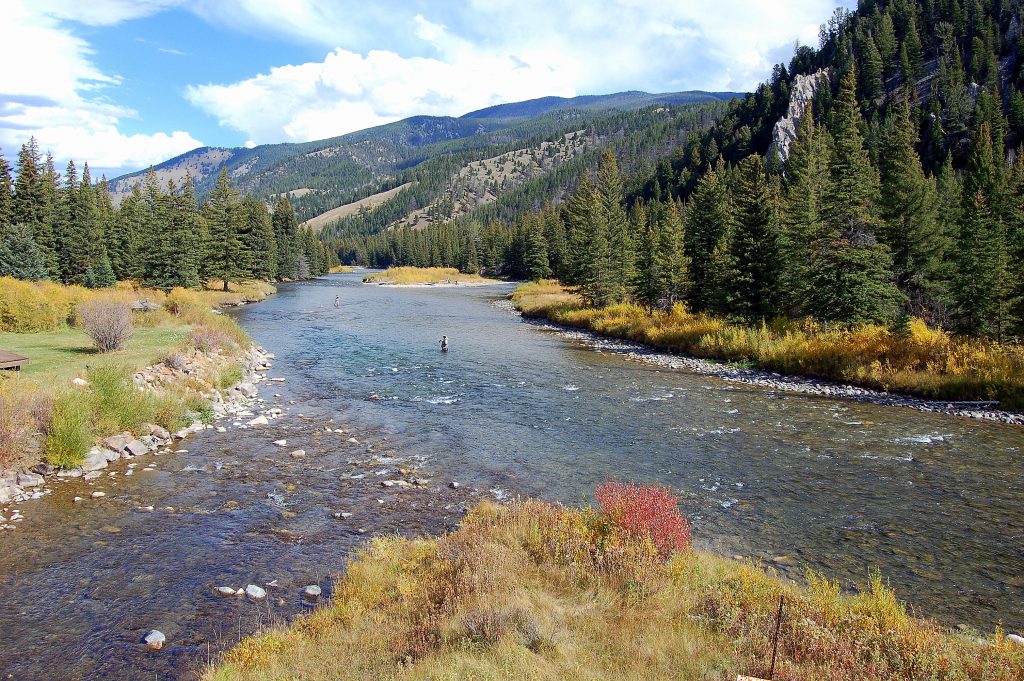
Irreversible Impacts
The reality of the pipeline and wastewater discharged into the environment could mean that main stem flow-rates would increase. While it is assumed that trout should survive the discharge, there are no promises to be made as to whether this added, unnaturally treated wastewater entering a low and warm river could sustain such a flowrate, without any way to control temperature.
The pipeline and where it’s being proposed, would be located in the dead-center of the river, coming from beneath the bedrock.
“Unless you’re standing over it wearing waders you wouldn’t even know it’s there,” said Ron Edwards. “The days of a big pipe visibly entering the river are a thing of the past.”
Given its central location, the effluent mixing-zone would be significant and would reach shore to shore for hundreds of yards. Fisheries biologists have suggested this mixing-zone could cause a temperature-barrier trout may not move upstream of.
There are also potential impacts on aquatic life by the 18 pharmaceuticals that were recorded by DEQ as present within the effluent pond at YC, which breached last year. A pipeline going directly into the river would mean all 18 plus likely many more, would be found within the Gallatin, and as Ron Edwards admitted, “there currently is no way to control pharmaceuticals.” Added to that, Big Sky now has a full-scale hospital located ¼ mile away from the West Fork. According to DEQ, there are no federal water quality criteria for pharmaceuticals, nor does Montana have any adopted pharmaceutical water quality standards.
……………..
Wild and Schemic
Unedited from BSWSD minutes:
Drimal assured the board that the GYC would not get in the way of a discharge permit. He feels that discharge can be a benefit to the quality of the Gallatin and believes that there are positive aspects of discharge. If GYC supports discharge, there is a positive political aspect of the District supporting the “wild & scenic” designation. The board was in agreement to not take action on Drimal ‘s request today. The board suggested that a management level person of GYC engage with the board, answer questions regarding degradation, and provide formal written answers to the board’s questions and concerns.
That management level person at GYC is Bob Zimmer, who currently sits on the steering-committee of the PR campaign for discharge. Within that same meeting, Kristen Gardner of GRTF was also present, as well as a dozen key-players in the Big Sky community. Direct-discharge to the river was discussed multiple times throughout Mr. Drimal’s Wild and Scenicproposition. Then the subject moved on to the Big Sky Sustainable Water Solutions Forum and the suggestion that Big Sky’s current wastewater capacity has reached nearly 80%.
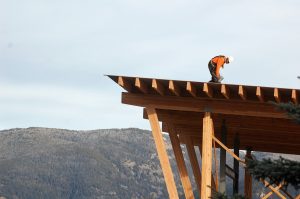
April Foolishness
It’s important to point out this GYC proposal took place during the same month, April 2016, when I communicated with Kristen Gardner of GRTF about whether they were for or against direct-discharge, also when I spoke directly with Ron Edwards and Bob Zimmer at length on the subject, and more importantly only one month after the Yellowstone Club’s wastewater pond had breached sending 30-million gallons of effluent into the river.
The Greater Yellowstone Coalition used to be considered a large group of conservationists and feared litigious organizers, but under its current leadership and direction, those days appear to be a thing of the past. Instead, collaboration, and in some cases collusion with developers and those posing as stakeholders, is the new approach taken. This would explain the over-development boom throughout the Montana region, not only in Big Sky, but Bozeman and surrounding cities, despite the costs associated with the impairment of downstream waterways, destruction of wildlife, and the fragile environment.
…………
Moonlight Toilet Basin
Kevin Germain, of Lone Mountain Land Company, is another key player in all of this and is fond of repeating at the meetings: “With existing rules and regulations we can keep spraying the forest with it, but I think this is a poor use of a precious resource”.
What Mr. Germain is referring to is his company’s current wastewater disposal method. He’s talking about his company’s effluent being, “a precious resource,” not the freshwater originating from the headwaters his company Moonlight Resort sits upon.
…That pure water is the most precious resource of all, it is the primary source of life the tributaries leading toward both the Gallatin and Madison River’s, down the mountain, require in order to survive.
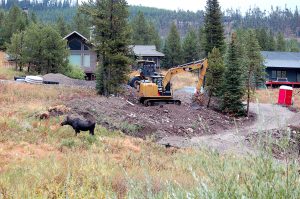
……..
The Solution
Since Montana DEQ, DNRC, and FWP, has in its possession the scientific data and can predict that in 2020 the unincorporated ski town of Big Sky will be beyond wastewater capacity and its wells will begin to run dry, any conservation organization involved should be pushing for a permanent building-moratorium going into effect by 2018.
Any further discussion or collusion on a pipeline directly-discharging effluent into the Gallatin River, by any of those involved in Big Sky, should cease immediately!
Especially since they too are privy to the facts and figures – showing both the West Fork and the main-stem of the Gallatin River are already negatively impaired by existing pollutants originating from Big Sky’s past and current development.
I’ve lived in Big Sky full-time for 5 years now and can attest that the last thing this town of 2,800 residents need are more second-homes and condos, those which are only inhabited by their wealthy owners on average 60 days per-year.
Even by the Resorts’ own 2016 figures: There are only 10 days per year the resort area is over 90% full. Otherwise, they’re floating in the 50% to 30% capacity.
In fact, as you’re reading this both Big Sky Resort and Yellowstone Club are closed. This happens twice a year, during what are called shoulder-seasons. Their seasonal foreign staff, those arriving on J-1 visas and paid minimum-wage, housing per diems, and ski passes; are now back in their native countries.
For another glaring example of how unnecessary any future development is in Big Sky, we have Mr. Ducuennois, VP of Development at Yellowstone Club, who when asked recently “how many of the current 570 club members are year-round Montana residents?”
He responded: ”I don’t even have to take off my shoes to count that high, last time we counted, we only had 5 or 6.”

We in Jackson Hole have had the same issues.I was part of a lawsuit to prevent effluent from the Teton Pines sewage plant from being injected into the same acquifer that our drinking water comes from . The preferred method of disposal was piping the effluent to the snake river. The fear was that tourism would be hurt if you put into the snake . So now I drink the effluent instead of the fish. The main sewage plant in Jackson put’s there effluent into the snake after going through a wetlands .
You being up two very good points. The water temperature of the effluent and the drug load in the effluent. Without these the effluent , it treated to class one water standards , would add nutrients to the water but that is about it.
This is a problem that is not going away and it is one that people do not want to deal with . They want to flush and forget.
I know you had a bad experience with a holding pond,but I think they should be required in case there is a problem . If the plant stops working there has to be someplace to store the sewage.
Thank you for your article.
Thanks for the insight on this issue.
Mr. Lewis,
Your article is full of half-truths and partial information, meant to incite rather than educate. If you would have fact checked appropriately, you would have reported that there are over 25 stakeholders meeting regularly to produce a Sustainable Water Solutions plan for the headwaters portions of both the Gallatin and Madison rivers located in the Big Sky area. All of the meetings are open to the public and I encourage you to attend prior to writing your next article.
This plan under development is to address the ecological health of the watersheds as well as water supply and wastewater treatment and disposal options for the community of Big Sky. The group has been meeting for almost a year and has at least another year of work to complete before a plan is produced.
You quoted me in the article, yet did not attempt to contact me for any information. I stand by my statement that disposing of reclaimed water in the forest is a waste as it is 100% consumptive. As we face changing climate regimes, it is imperative we protect our water supplies and in-stream flows. There are more innovative ways to use reclaimed water: snowmaking (i.e. Snow Bowl in Flagstaff, AZ), shallow ground water discharge, deep well injection, irrigation of landscape, and yes, if done properly and responsibly, surface water discharge. You failed to mention in your article the entire city of Bozeman’s reclaimed water discharges in to the East Gallatin River, which is a headwaters stream, tributary to the Gallatin, Missouri and Mississippi.
If you are concerned about the health of Jack Creek, which headwaters in Moonlight and is a tributary to the Madison, please visit the Madison Conservation District website: http://madisoncd.net/madison-stream-team/madison-stream-team-reports/. Moonlight, along with our partners, have funded and completed 10 years of water quality monitoring and will continue to do so in order to ensure the health of our watershed.
I am confident the group of dedicated stakeholders that are working on these issues will come up with ecological sound and sustainable solutions.
Please feel free to contact me at kevin@moonlightbasin.com
Regards,
Kevin Germain
Kevin Germain,
Your wind scoured rock pile of a ski resort is directly responsible for breaking the connectivity of the Spanish Peaks Wilderness to the north and the Bob Marshall Wilderness to the south. This is critical habitat to the whole greater Yellowstone ecosystem. We know the value set which you espouse and understand the long history of environmental catastrophe which Big Sky, YC, and bankrupt Basin has wrought on the landscape. So, what you just wrote is nothing less than green washing pr of the highest order which you were no doubt trained on and certainly payed well to spew. My only question is, do you ever look out the windshield of your logo’d company SUV and see the landscape which you and the corporation you work for are shamelessly profiteering off of? Feel free to never contact me.
Patrick,
The original Moonlight Basin purchase was 25,000 acres and it was indeed a broken link in the Lee Metcalf Wilderness Area chain (not Bob Marshal). Moonlight sold 17,000 acres to conservation buyers who subsequently put 14,500 acres under conservation easements with the Montana Land Reliance. Our existing plan will ensure over 80% of the original purchase is protected in permanent open space and conservation easements.
Our other efforts to maintain wildlife connectivity between the Lee Metcalf Wilderness areas is to keep the Jack Creek Road gravel and low traffic so it does not become a major paved, thoroughfare that would inhibit wildlife movement.
I do not have a logo’d company SUV. I usually drive our family prius…
I know you do not want me to contact you, but if you would ever like a tour of Moonlight, I would love to show you and Greg around.
Best
Kevin
Driving to your job at Moonlight Basin in your Prius is kind of like painting peace signs on the Enola Gay.
If I got a tour would that include being able to access all the areas you guys have posted no trespassing signs on?
Kevin,
Is your corporation open to selling the remaining lots to a conservation organization and advocating for zero discharge into the Gallatin or Madison?
If so, I’d like to tour the area.
John Meyer
Cottonwood Environmental Law Center
(406) 546-0149
I believe as simple lovers an users of the beautiful Montana rivers and land can raise the funds, $250,000.00 minimum, and get the required amount of signatures on a petition stop to this fouling of our resources in the name selfish greed. We better start now, though.
I cannot believe that intelligent people even need to have this discussion!
Not only No, but hell no!
I will be contacting all of my elected represenatives and all of the water protectors I know to mount opposition!
This is a very bad idea for God’s sake!
Not in my Montana. My Uncle, Chet Huntley would turn in his grave!!